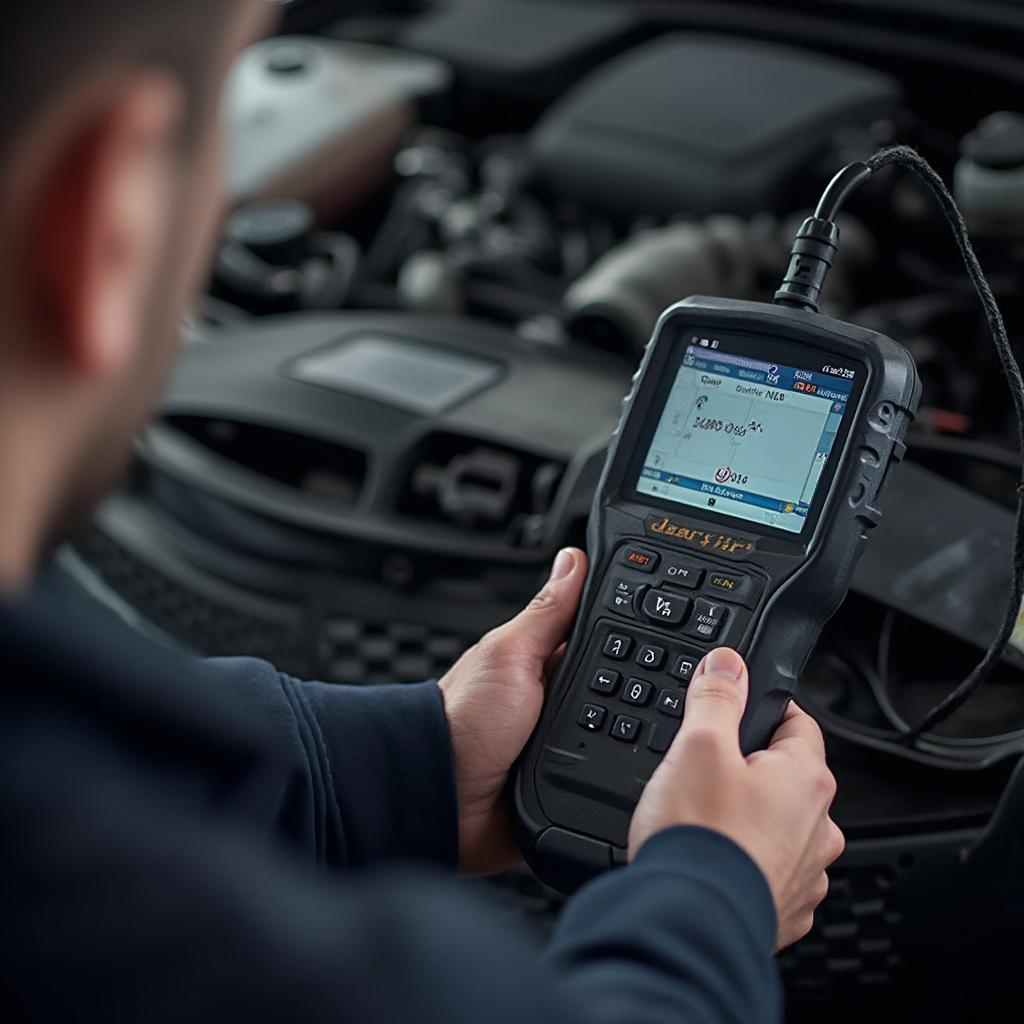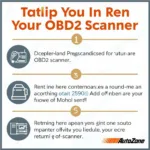OBD2 standard codes are the key to unlocking the secrets your car is trying to tell you. They provide valuable insights into the health and performance of your vehicle, empowering you to address issues promptly and efficiently. This guide will delve into the intricacies of OBD2 standard codes, providing you with the knowledge you need to interpret them effectively.
Decoding the Mystery of OBD2 Standard Codes
OBD2, or On-Board Diagnostics II, is a standardized system used in vehicles manufactured since 1996. It allows external devices, known as OBD2 scanners, to access diagnostic information from a vehicle’s computer. These scanners retrieve diagnostic trouble codes (DTCs), commonly referred to as OBD2 codes, which pinpoint specific malfunctions within the vehicle’s systems. Understanding these codes can save you time and money on repairs.
Types of OBD2 Standard Codes
There are several types of OBD2 codes, each represented by a letter and four numbers. The letter indicates the system related to the code:
- P (Powertrain): Relates to the engine, transmission, and associated components. Most common codes fall under this category.
- B (Body): Concerns issues with the body systems, such as airbags, power windows, and central locking.
- C (Chassis): Covers components related to the chassis, including the anti-lock brake system (ABS), steering, and suspension.
- U (Network): Relates to network communication issues between various control modules within the vehicle.
The four numbers following the letter provide more specific information about the malfunction.
2017 kia optima hybrid obd2 owners, for example, might encounter a P0420 code, indicating a catalytic converter efficiency issue.
What Do OBD2 Standard Codes Tell You?
OBD2 codes are designed to provide a starting point for diagnosing vehicle problems. They indicate which system is experiencing a malfunction, allowing mechanics and car owners to narrow down the potential causes. However, they don’t pinpoint the exact problem. Further diagnostics and troubleshooting are usually required to determine the root cause.
What is a P0300 code? It indicates a random misfire. What about a P0171 code? This signals a lean air/fuel mixture.
 Mechanic Diagnosing Car with OBD2 Scanner
Mechanic Diagnosing Car with OBD2 Scanner
Using an OBD2 Scanner to Retrieve Codes
Retrieving OBD2 codes is a simple process. Locate the OBD2 port, usually under the dashboard on the driver’s side. Plug in an OBD2 scanner, turn on the ignition (but don’t start the engine), and the scanner will retrieve any stored codes. Some advanced scanners can even provide live data and perform other diagnostic functions.
Owners of a b16a2 obd2 ecu might find this process particularly useful.
How to Interpret OBD2 Codes
Once you have the codes, you can use online resources or repair manuals to understand their meaning. Keep in mind that the same code can have different meanings depending on the vehicle make and model. It’s important to consult resources specific to your vehicle.
1998 zj sci obd2 owners, for instance, would need to consult resources specific to their Jeep Grand Cherokee model.
Common Misconceptions About OBD2 Codes
One common misconception is that clearing the codes fixes the problem. This is rarely the case. Clearing codes merely erases the stored information; the underlying problem remains. Another misconception is that all OBD2 codes require immediate attention. Some codes indicate minor issues or intermittent faults that may not require immediate repair.
The Importance of Regular OBD2 Scans
Regular OBD2 scans can help identify potential problems early on, preventing them from becoming more serious and costly. They also provide valuable information about your vehicle’s performance and can even help improve fuel efficiency.
If you’re looking for a reliable cummins obd2 scanner, be sure to do your research and choose a reputable brand.
Finding Your OBD2 Port: A Quick Guide
Locating your car’s OBD2 port can sometimes be tricky. It’s usually located under the dashboard on the driver’s side, but its exact position can vary depending on the car make and model. Consult your owner’s manual for specific instructions. Those with a 1996 corvette obd2 location question can find answers online.
Conclusion
Understanding OBD2 standard codes is essential for any car owner. They offer a window into your vehicle’s internal workings, allowing you to address problems proactively and maintain optimal performance. By familiarizing yourself with these codes and utilizing an OBD2 scanner, you can take control of your car’s health and save money on repairs.
FAQ
- What is an OBD2 code?
- How do I read OBD2 codes?
- What is the most common OBD2 code?
- Can I clear OBD2 codes myself?
- Will clearing OBD2 codes fix the problem?
- Where can I find more information about OBD2 codes?
- How often should I check my OBD2 codes?
For assistance, contact us via WhatsApp: +1(641)206-8880, Email: [email protected] or visit us at 789 Elm Street, San Francisco, CA 94102, USA. We offer 24/7 customer support.

